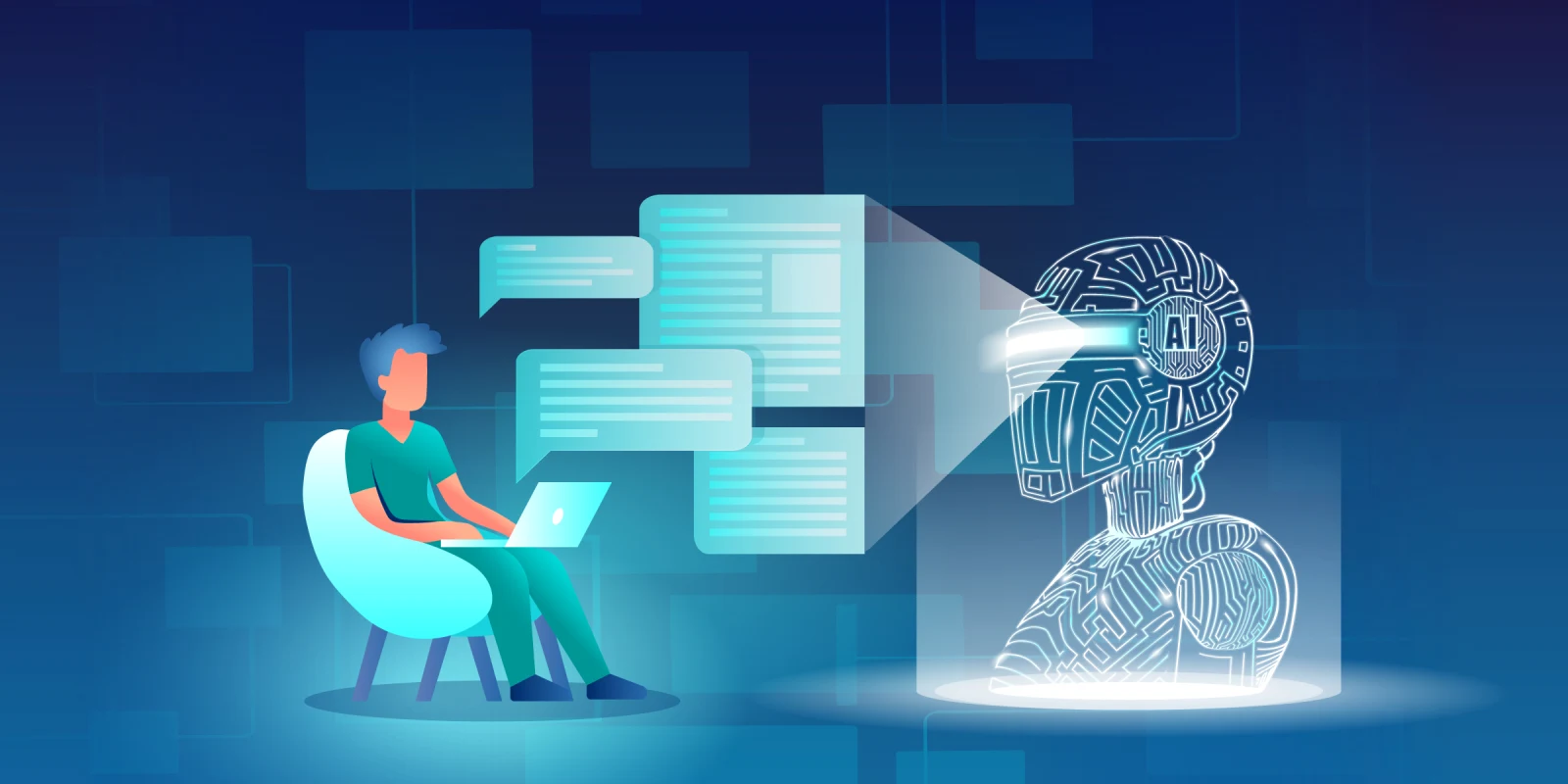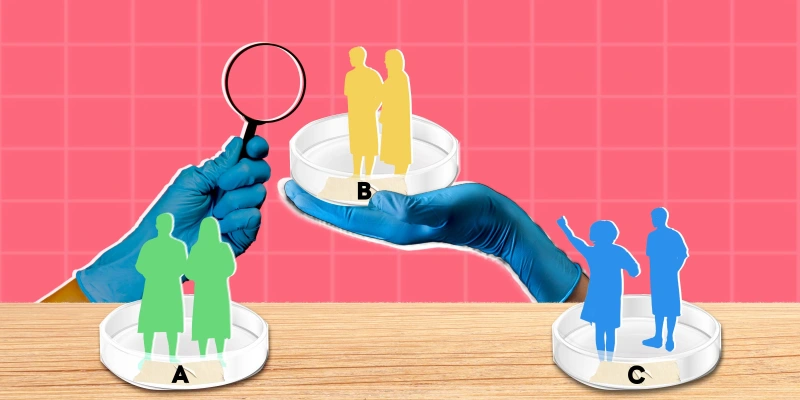In recent years, and with indefatigable speed, artificial intelligence (AI) has entered the proverbial examining room. AI can be used to craft educational materials, figure out complicated patterns of symptoms en route to diagnoses, eavesdrop on conversations while writing progress notes, and even act as a kind of mental health counselor. While there is certainly promise, there is plenty of peril. I am writing this essay in the middle of 2024, so please forgive me if you are reading it in a future time overrun with machines. Feel free to send a benevolent Terminator back to us if we should be destroying AI now before it ends civilization. Or more germane to the practice of medicine — if AI is dismantling us as physicians.
I can trace the rise of AI in the examining room. First, my practice hired a full-time medical scribe to listen, take notes, and type dictation in real time with us. But this was still based on the organic intelligence of two human minds negotiating the complicated stuff of a primary care office visit. Dictating to the scribe meant that we no longer typed a story for each visit, jargony and crude as it may have been, but we still composed our thoughts in a kind of oral tradition. Perhaps not the epic poetry of Beowulf or The Odyssey, but narratives nonetheless.
Next, the EMR gained automatic speech-to-text ability with a new program called Dragon. No longer did we collaborate with a human scribe; instead we dictated narratives of each visit using a microphone and a complex computer program that listened to and transcribed our words. But those words were still framed in the cross-signaling, infinitely complex supercomputers of our own brains. For me, using speech-to-text is still a unique process that combines how our preliterate ancestors communicated in firelit caves with the quantum leap of conjured text and words magically appearing upon glowing screens. This feels like an augmentation of innate ability rather than a forfeiture to a machine.
But here in 2024 we are flirting with programs like Dragon Ambient eXperience. This game changer is a story synthesizer and storyteller. It can listen to a doctor and patient interacting, strip out the small talk, and then craft what it deems are the essential subjective history, implied assessments, and spoken plans in real time. I have resisted this for now, despite its putative time and energy-saving capacities. The stealthy paradigm shift of turning over the creation of a progress note to an AI chatbot that listens to an entire conversation between a doctor and patient gives me — and should give you — pause.
These AI programs are built upon a technology called large language models (LLMs). They’re incredible, and only getting more effective. But should we human doctors welcome the easy road? A path that may lead to our obsolescence and incompetence as story writers and storytellers?
The answer, for me, is no. I believe that the synthesis, reflection, intuition, and partly subconscious construction of a patient narrative is a laborious but essential way to make sense of chaos while trying to help another human being. We humans have always sorted disorder with story. It is what makes us truly unique among intelligent animals, and the masters of our world. Our ability to weave and then believe in group stories like religion, tribe, and nation allows us to dream not just individually, but also collectively. Group fictions forge culture, order, and power. We can act in concert with the strength, intelligence, and the coordination of millions of people marching under the same banner.
Perhaps I digress with this expansive notion of the power of stories. But even the much smaller plane upon which we exist as doctors and patients is powered by them. Stories told and received between people are the very currency of human intelligence, understanding, and compassion. I want to hear about your trip to Guatemala, the volunteer work you did, the guacamole and the volcanoes as we figure out your cough and chest pain. Maybe I’ll tell you a related story of my own chest pain to secure your trust and buy-in for our assessment and plan. Surrendering an ever-increasing portion of that kind of power to an AI chatbot may lead physicians to a more enfeebled state of mind, unable to truly generate and therefore understand the story a person is telling us about their health.
Beyond story-synthesizing programs, there has also been a rise in AI chatbots like Woebot, Joyable, and Wysa for depressed and anxious patients in lieu of a human psychologist or counselor. As a family physician, I consider the recent introduction and promotion of these chatbots to be beyond the pale. I can’t in good conscience turn a fragile soul over to an LLM chatbot and say: “This program is built for you to text back and forth with, and it will do cognitive behavioral therapy with you.” This is happening now in 2024. I believe we humans still need to do the hard, rewarding work of caring for each other. It might be the last thing we cling to in terms of our purpose here.
Indeed, when it comes to therapy, a large part of the process is the gift of some other human being listening to our struggles while providing empathy, compassion, and a sincere hand extended to help pull us along. Professionals do this within a framework that is proven to help, and derive a living wage and working dignity in so doing. While I’m sure there are studies showing that artificially intelligent CBT chatbots produce positive results for some and might improve the low rate of completed referrals to mental health counselors, once again I just can’t see myself saying: “Thank you for opening up to me about your problems. May I now introduce you to this chatbot that can help you. It’s called Woebot.”
And yet I admit that there are many exciting ways to partner with AI in the examining room. I confess that I have used it to quickly generate custom patient educational information, to brainstorm answers to some really hard questions from patients, and even to dump a baffling constellation of symptoms into a text field and see if the inscrutable AI mind can proffer a hidden differential diagnosis. Incorrect information and hallucinations are possible, but the programs I use increasingly cite references, and for now I can scan their answers for wrong information with my own medical knowledge base. Imagine the possibilities: better pattern recognition, higher level problem juggling, personalized treatments down to the level of our DNA, efficiencies of all sorts, hacking and restocking the complicated microbiome, and synthesizing hundreds of biomarkers into a profile and plan for each person that is like sorcery, all while alleviating some of the unnecessary burdens of medical documentation.
We are not there yet. Increasingly, there has been research conducted on the effects of AI in medicine, and the findings are not always promising. A study published in The Lancet assessed the potential of LLMs for reducing physician workload and enhancing patient education; it found that despite improvements in perceived efficiency, 7.1% of unedited LLM-generated responses posed risks to patients, including 0.6% that had potential life-threatening implications. A different study published in JAMA found that use of an LLM to reply to patient messages did not save clinicians time overall. And finally, a study published in NEJM found that popular LLMs are lousy at mapping patients’ illnesses to diagnostic codes when fed unstructured clinical text.
In conclusion, if we can retain some control of the story and therefore our core humanity, it is likely that the other tools unlocked by AI will be astounding improvements. And yet, like the Luddites who fought back against the dehumanization and economic ruin incurred by the machines of the industrial revolution, I stubbornly plan to retain a good chunk of my power as a human, physician, and weaver of stories. The tales and plans carved into charts emerge from an alchemy of intuition, facts, and cross pollination between human minds. I will keep referring desperate and wounded spirits to human counselors instead of parrot-like, scripted chatbots. I won’t turn my 80-year-old diabetic, arthritic, depressed, resilient, and courageous patient over to an AI LLM for an automatic car washing. This leaves scratches. Unless she herself makes that choice, I’ll do it by hand for as long as I can.
For if we are no longer storytellers, then we are something else entirely. I’m convinced that such a total abdication of our unique human power will create fast, productive, programmatic, and ultimately diminished physicians.
In your opinion, what is the best use of AI in medicine? Share in the comments!
Ryan McCormick is a family physician and writes Examined, a newsletter about primary care and life in medicine available on Substack. He has been doing entirely clinical work for two decades, and lives in South Philadelphia. Dr. McCormick is a 2023–2024 Doximity Op-Med Fellow.
Image by Feodora Chiosea / Getty Images







